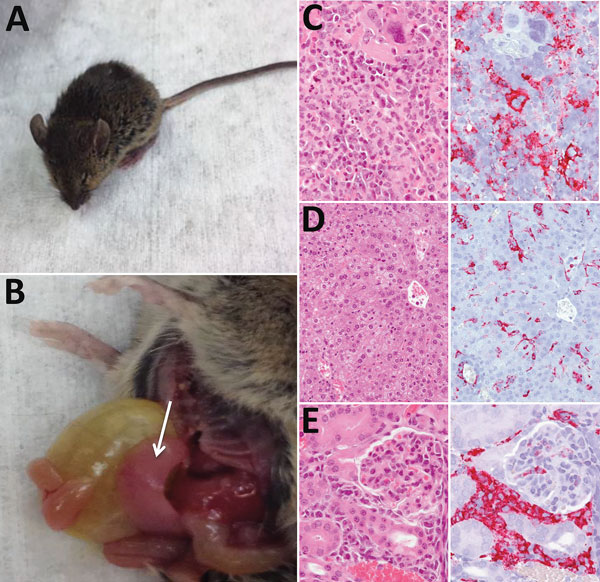Volume 22, Number 12—December 2016
Research
Vertebrate Host Susceptibility to Heartland Virus
Figure 2

Figure 2. Pathologic changes associated with infection of interferon-α/β/γ receptor–deficient (Ag129) mice with Heartland virus (HRTV). A) Mouse showing typical clinical signs of HRTV infection (ruffled fur, hunched posture, and squinting eyes). B) Dissected mouse showing an enlarged pale spleen (arrow). C–E) Hematoxylin and eosin staining (left panels) and immunohistochemical staining (right panels) for HRTV nucleocapsid protein of spleen (C), liver (D), and kidney (E) of Ag129 mice at 5–7 days postinoculation with 104 PFU virus. Original magnifications: C, ×100; D, ×50; E, ×100.
Page created: November 17, 2016
Page updated: November 17, 2016
Page reviewed: November 17, 2016
The conclusions, findings, and opinions expressed by authors contributing to this journal do not necessarily reflect the official position of the U.S. Department of Health and Human Services, the Public Health Service, the Centers for Disease Control and Prevention, or the authors' affiliated institutions. Use of trade names is for identification only and does not imply endorsement by any of the groups named above.